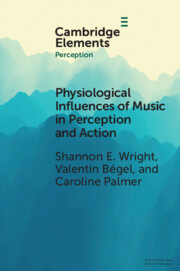Element contents
Physiological Influences of Music in Perception and Action
Published online by Cambridge University Press: 25 February 2022
Summary
- Type
- Element
- Information
- Series: Elements in PerceptionOnline ISBN: 9781009043359Publisher: Cambridge University PressPrint publication: 24 March 2022
References
- 9
- Cited by



